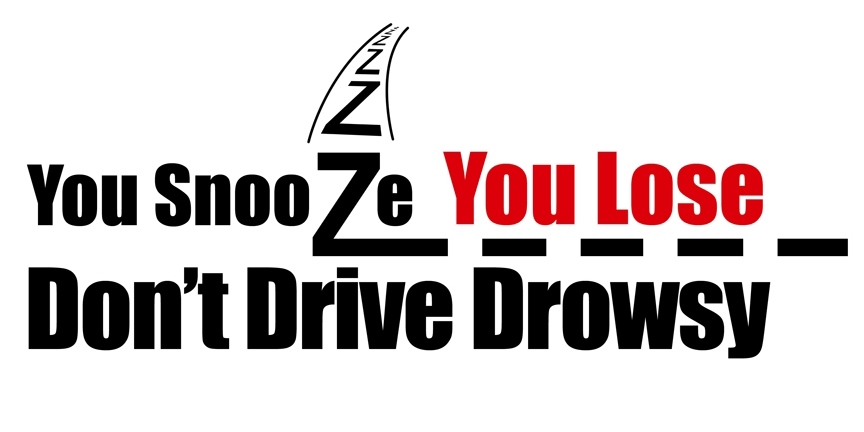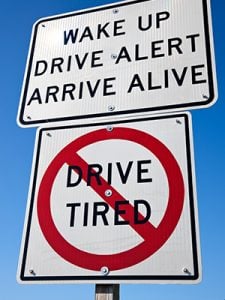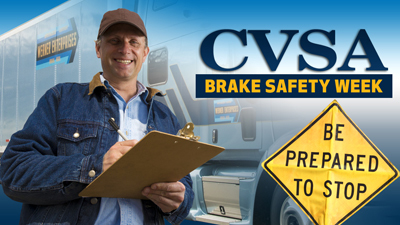November 7th through 13th, 2021 is Drowsy Driving Prevention Week
The National Sleep Foundation has launched Drowsy Driving Prevention week as an educational campaign designed to save lives by increasing awareness of the dangers of driving while sleepy. The National Highway Traffic Safety Administration estimates that drowsy driving causes at least 100,000 police-reported crashes and kills more than 1,550 Americans each year. It is curious that all states have laws in place to enforce drunken driving, but few have laws to cite a driver who has fallen asleep causing an accident. Only the state of New Jersey explicitly defines drowsy driving as recklessness under a vehicular homicide statute. Known as "Maggie's Law," New Jersey's drowsy driving law has served to raise awareness of the consequences of fatigue behind the wheel and has spurred significant action in other states. There are now at least 8 states with 12 pending bills that address fatigued driving in various ways.
For more information on Drowsy Driving Prevention Week, click here
What You Can Do to Stay Alert While Driving
Sleep / Take naps: Your best bet is to get enough sleep every day. If you must stay up late, afternoon naps are a great way to get more sleep. If you feel drowsy while driving, a 15-minute nap can be very effective. Make sure to pull over in a safe place.
Caffeine: Avoid caffeine during the last half of your workday as it may contribute to sleeping problems. You can gain short-term alertness by drinking coffee or other caffeine sources if driving, but it usually takes 30 minutes to take effect and wears off after a few hours.
Regular stops: You should stop every 100 miles or 2 hours. Switch drivers if you can.
AC MAX – Recirculation: Do not operate the vehicle for extended periods of time with the AC on MAX or Recirculation. Under these conditions, the level of C02 in the vehicle is increased contributing to drowsy driving.
Avoid Alcohol: If you have been drinking, please don't drive! In addition to being illegal, alcohol makes you sleepy and amplifies your fatigue.
If you are planning a long trip, AAA offers the following tips for avoiding fatigue:
- Prepare for your trip by getting a good night's sleep the night before. Plan to drive during the time that you are normally awake and stay overnight rather than traveling straight through.
- Avoid driving during the body's "downtime". According to AAA, this is generally in the mid-afternoon and between midnight and 6:00 a.m.
- If you have passengers, talk to them. It will help to keep you alert, and they will also be able to tell if you are showing signs of getting sleepy.
- Schedule a break every 2 hours or every 100 miles. Take a nap, stretch, take a walk and get some exercise before resuming your trip.
- Stop sooner if you show any dangerous signs of sleepiness.
"TRICKS" THAT DO NOT WORK
Opening the window, turning on the air conditioning, or playing loud music is not effective in keeping drivers alert for an extended period.
Halloween Driving “Tricks” to Keep Everyone Safe
To help everyone bring home treats — not tragedies — follow these tips for a safe Halloween:
CVSA posts the results of Brake Safety Week 2021
Commercial Vehicle Safety Alliance’s (CVSA) Brake Safety Week took place August 22-28, 2021. Over 35,700 commercial vehicles were inspected in the United States, Canada, and Mexico over the seven-day annual initiative.
During this year’s event, inspectors placed 12 percent of commercial motor vehicles (CMVs) out of service (OOS) for critical brake violations. More than 80 percent of this year’s inspections took place in the United States. Out of the 28,694 CMVs inspected in the U. S., 13.5 percent were placed OOS with brake violations.
For those CMV inspections outside of the United States, brake OOS rates were:
15.4 percent for Canada, and 2.6 percent for Mexico.
Year-over-year, the U. S.’s brake violation rate increased slightly from 13 percent in 2020.
This year, inspections focused specifically on brake hose chafing violations. Only 3 percent of U. S. CMVs were placed out of service for brake hose chafing violations, but this is an increase from 2020’s critical brake hose chafing violation rate of 2.5 percent.
PMTC Provides Update on Canadian ELD Mandate
The Private Motor Truck Council of Canada has provided an update on the status of the mandate for Electronic Logging Devices for commercial motor vehicles in Canada.
Although the requirement for ELDs was scheduled to go into effect on June 12, 0221, Transport Canada and the provincial governments agreed not to enforce the requirements until June 12, 2022.
Unlike the U.S. ELD rule, where manufacturers self-certify that their device meets the Federal Motor Carrier Safety Administration’s regulations, the Canadian mandate requires each device to be certified as compliant by a third-party agency. Three third-party certification bodies have now been approved. There have also been three changes to the technical standard for ELDs and testing procedures since October 2020; this has led to further delays in the certification process.
Only six devices are currently listed on the Transport Canada certified list. PMTC advises that if your device was installed prior to it being certified. It will likely need a software upgrade, or be replaced to be a compliant certified device. To comply with the Canadian ELD requirements carriers must use a device on the list of certified ELDs, and drivers and administrative staff must be trained to use them by the full enforcement date of June 12, 2022.
CMVs operated under a rental agreement of no more than 30 days are exempt from the ELD requirements. Those drivers would need to keep a paper logbook. In addition, if a CMV is operated within a 160 km radius of the driver’s home terminal, the driver is not required to keep a logbook, and thus would also be exempt from having to use an ELD.












